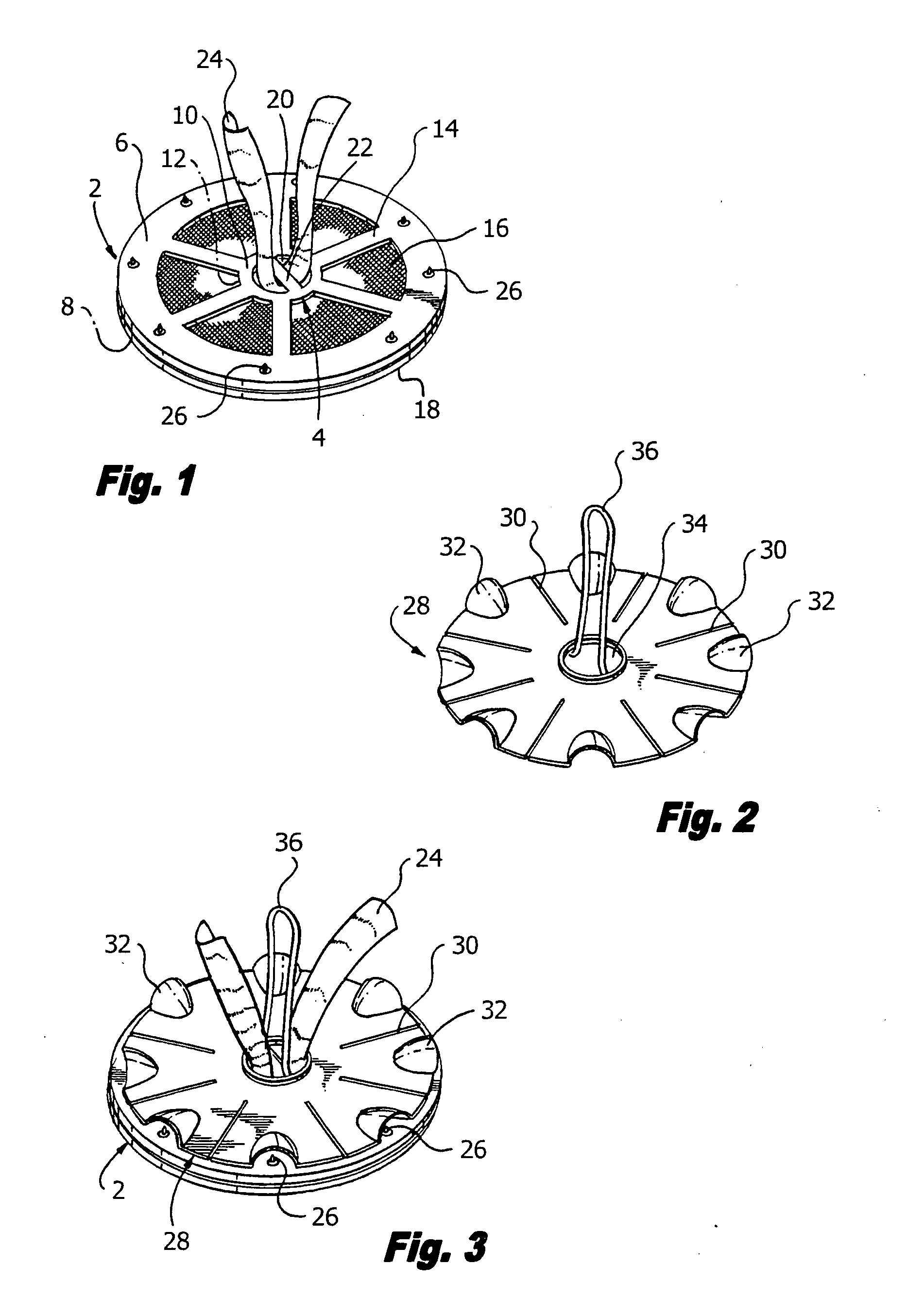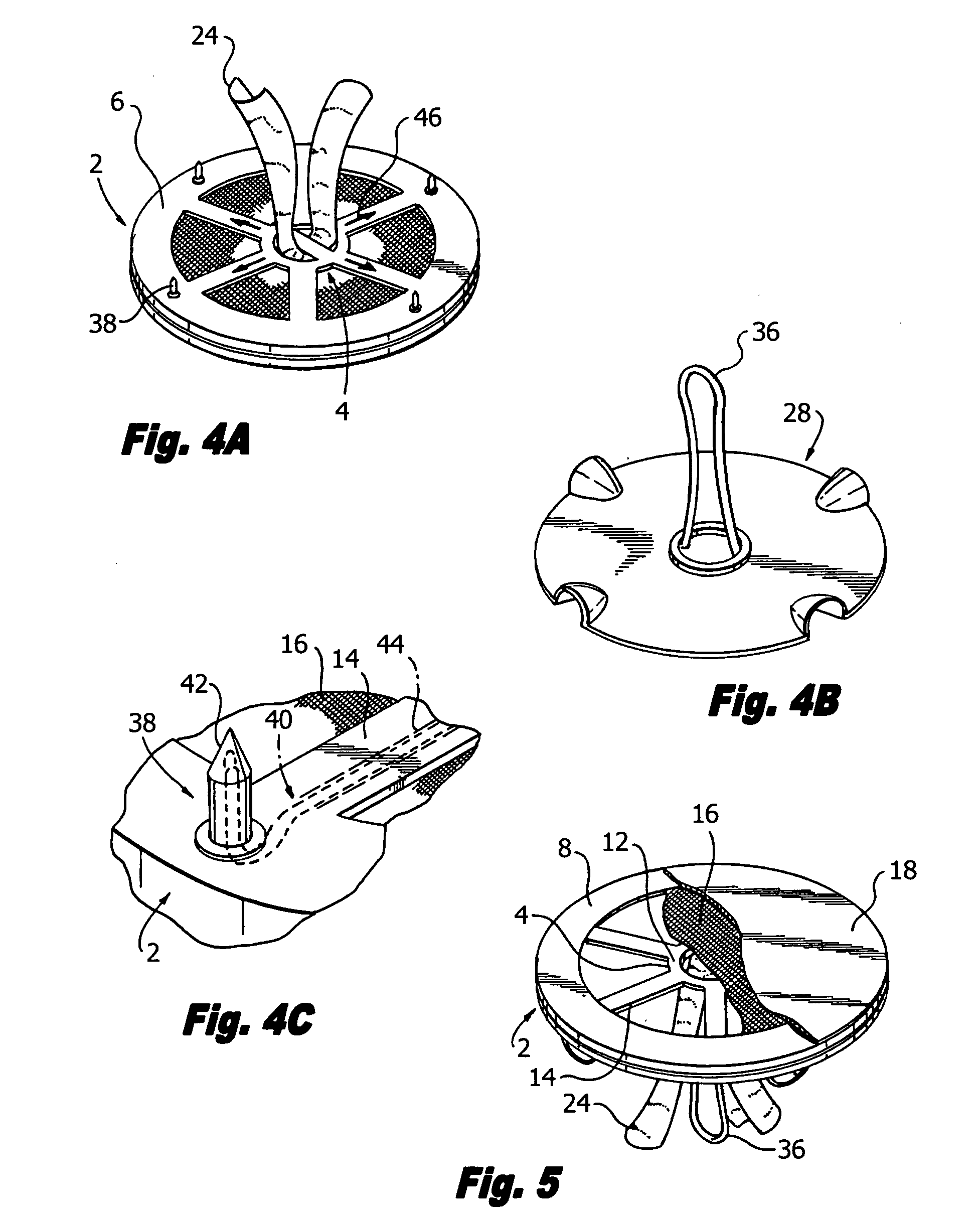Hernia mesh support device
- Summary
- Abstract
- Description
- Claims
- Application Information
AI Technical Summary
Benefits of technology
Problems solved by technology
Method used
Image
Examples
Embodiment Construction
[0037]The present invention is directed to an implantable surgical device and its method of use in the repair of hernial defects, trocar puncture wounds and the like.
[0038]Referring initially to FIGS. 1-3 of the drawings, it will be seen that a hernia mesh support device constructed in accordance with a first form of the present invention includes a relatively stiff outer support ring 2 (which is stiffer than a mesh material used in the device), and an inner ring 4 (which may also be relatively stiff) which is situated concentrically radially within the outer support ring 2. The outer support ring 2 and the inner ring 4 reside in the same plane. The outer support ring 2 has a first axial side 6 and a second axial side 8 situated opposite the first axial side 6. Similarly, the inner ring 4 includes a first axial side 10 and a second axial side 12 situated opposite the first axial side 10, corresponding first axial sides 6, 10 and second axial sides 8, 12 of the outer support ring 2 a...
PUM
 Login to View More
Login to View More Abstract
Description
Claims
Application Information
 Login to View More
Login to View More - R&D
- Intellectual Property
- Life Sciences
- Materials
- Tech Scout
- Unparalleled Data Quality
- Higher Quality Content
- 60% Fewer Hallucinations
Browse by: Latest US Patents, China's latest patents, Technical Efficacy Thesaurus, Application Domain, Technology Topic, Popular Technical Reports.
© 2025 PatSnap. All rights reserved.Legal|Privacy policy|Modern Slavery Act Transparency Statement|Sitemap|About US| Contact US: help@patsnap.com



